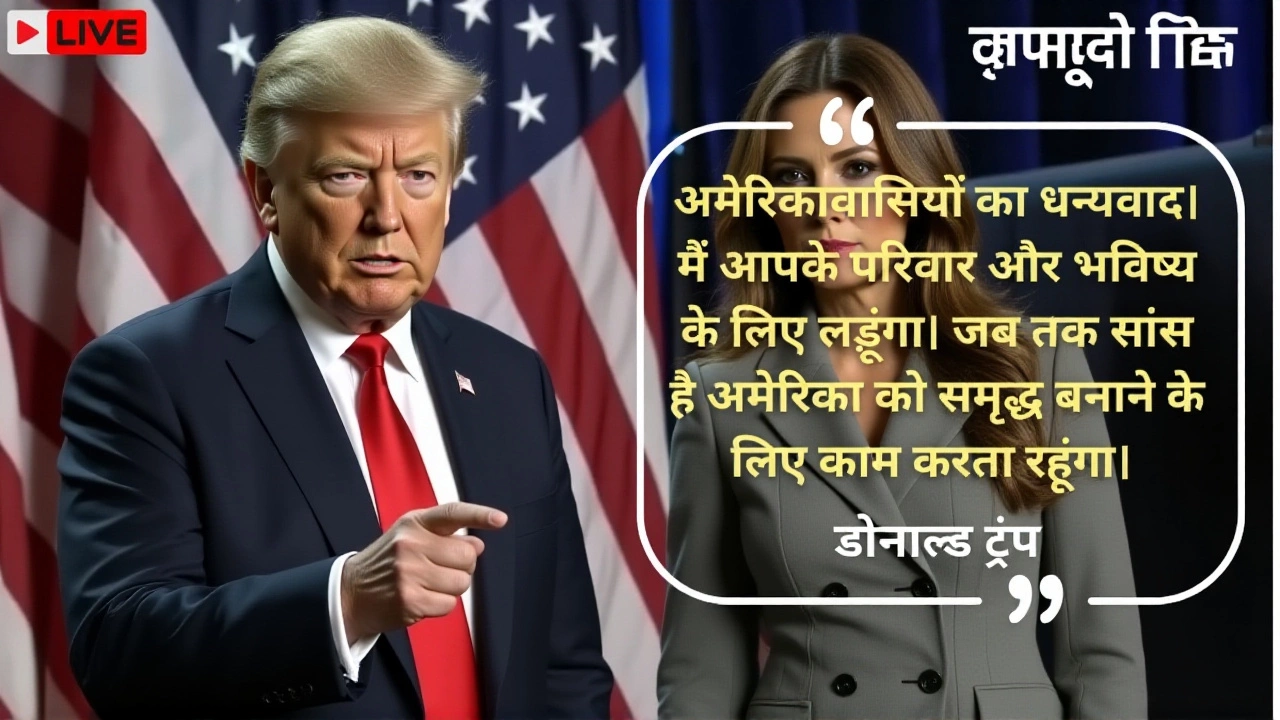Donald J. Trump has returned to the White House, defeating incumbent Vice President Kamala D. Harris in a historic and deeply polarizing 2024 United States presidential electionUnited States. With 312 electoral votes to Harris’s 226—and a narrow but decisive win in the popular vote—Trump became only the second president in American history to serve non-consecutive terms, joining Grover Cleveland. The results, certified by the National Archives on November 10, 2024, reflect a seismic realignment in American politics, driven by economic anxiety, cultural divides, and a voter coalition that defied conventional expectations.
A Coalition That Redrew the Map
Trump’s victory wasn’t just about rallying his base—it was about expanding it. According to a Pew Research Center analysis released in June 2025, Trump gained ground among groups that had long been Democratic strongholds. He won 48% of Hispanic voters, a dramatic shift from Biden’s 61% win in 2020. Among Black voters, he captured 15%, up from 8% four years prior. Even among Asian Americans, his share rose to 40%, compared to Biden’s 30%. This wasn’t a fluke. It was a deliberate, well-funded campaign targeting suburban immigrants, working-class minorities, and evangelical communities disillusioned with Democratic policies on crime, education, and inflation.
He also won every single swing state: Arizona (11 EVs), Florida (30 EVs), Georgia (16 EVs), Iowa (6 EVs), Nevada (6 EVs), North Carolina (16 EVs), and Wisconsin (10 EVs). In Nebraska and Maine, the split electoral vote system delivered one electoral vote each to Harris after she won the 2nd Congressional District in both states—a small consolation in an otherwise sweeping loss.
The Withdrawal That Changed Everything
None of this would have happened without Joe Biden’s stunning withdrawal on July 21, 2024. The first incumbent president to step aside since Lyndon Johnson in 1968, Biden’s decision followed a widely criticized debate performance in June, where his cognitive slips and sluggish responses ignited panic among Democrats. Within days, Kamala D. Harris was nominated as the Democratic standard-bearer, but she never fully shook the perception of being a placeholder. Her campaign struggled to define a vision beyond defending Biden’s legacy—while Trump, by contrast, ran on a clear, aggressive platform: border control, tax cuts, deregulation, and a hardline stance on Ukraine and Gaza.
Trump’s running mate, JD Vance, the junior senator from Ohio, became a critical asset. His working-class roots and populist rhetoric helped Trump maintain momentum in the Rust Belt, even as he made inroads in the Sun Belt. Meanwhile, Harris’s pick, Minnesota Governor Tim Walz, was seen as a safe but uninspiring choice who couldn’t energize the base.

Religion, Race, and the Rural-Urban Divide
The election revealed a country more fractured than ever. Trump won voters who attend religious services monthly or more by a 64%-34% margin—a sign that faith remains a potent political force. Among those who attend less frequently, Harris held a narrow 56%-43% edge. In rural areas, Trump dominated by 40 points (69%-29%), a wider gap than in 2020 or 2016. Urban voters, meanwhile, remained loyal to Harris, giving her a 65%-33% advantage in cities. But even there, Trump made gains: in Atlanta, Chicago, and Philadelphia, his vote share increased by 3 to 5 percentage points compared to 2020.
His message resonated with voters tired of inflation, which hovered near 4.2% in the final quarter of 2024. The repeal of Roe v. Wade didn’t turn out Democrats as expected—many voters in swing states prioritized economic stability over abortion policy. Illegal immigration, meanwhile, remained the top issue for 38% of voters, according to exit polls, and Trump’s border enforcement pledges clearly moved the needle.
What Comes Next
Trump’s return raises urgent questions. Will he pursue sweeping executive actions on immigration, taxes, and the judiciary? Will Congress, still split with Democrats holding the Senate and Republicans narrowly controlling the House, enable his agenda—or resist it? And how will global allies react to a president who has signaled a potential withdrawal from NATO and a pivot toward transactional diplomacy in Ukraine and the Middle East?
One thing is clear: the political map has been redrawn. Trump didn’t just win back voters—he won over new ones. His coalition, more racially diverse than his 2016 or 2020 campaigns, suggests a new era of Republican politics—one that doesn’t rely solely on white voters but on a broader, more complex alliance of disaffected groups across the country.

Historical Echoes and Unanswered Questions
Trump joins Grover Cleveland as the only U.S. president to serve two non-consecutive terms. But Cleveland’s second term came in an era of limited federal power. Trump’s second term will unfold amid a digital media landscape, deep institutional distrust, and a Supreme Court that has already reshaped American life. His legal battles—nine indictments and two criminal convictions—are still unresolved. Will he pardon himself? Will he retaliate against prosecutors? Will his allies in Congress shield him from accountability?
These questions linger. But for now, the country is watching—and waiting.
Frequently Asked Questions
How did Donald J. Trump win 312 electoral votes despite losing the popular vote in 2020?
Trump didn’t lose the popular vote in 2024—he won it: 77.3 million to Harris’s 75 million. In 2020, he lost the popular vote by nearly 7 million. His 2024 victory was built on flipping key swing states by narrow margins—often under 2%—while expanding his support among minority voters in urban and suburban areas. This combination of increased turnout in rural areas and modest gains in cities gave him the electoral edge.
Why did Kamala Harris lose despite being the incumbent vice president?
Harris inherited a damaged brand. Voters associated her with the Biden administration’s struggles on inflation, border security, and perceived indecisiveness. She lacked a compelling personal narrative, and her campaign failed to articulate a vision beyond continuity. Exit polls showed 58% of voters felt she wasn’t ready to be president—a sentiment that haunted her campaign from day one.
What role did Joe Biden’s withdrawal play in the outcome?
Biden’s exit created chaos in the Democratic Party. Harris was nominated just six weeks before Election Day, leaving little time to build infrastructure or define her platform. Many longtime Biden supporters either stayed home or voted third-party. Meanwhile, Trump capitalized on the uncertainty, framing the election as a choice between stability and chaos—and voters chose stability—even if it meant returning to him.
How did Trump win Hispanic voters after losing them badly in 2020?
Trump’s campaign targeted Hispanic voters with localized messaging: economic opportunity, small business tax relief, and criticism of Democratic policies on crime. In Florida, he won over 60% of Cuban Americans and 45% of Puerto Ricans. In Texas and Arizona, he appealed to conservative-leaning Latinos frustrated with inflation and school policies. His message wasn’t about immigration alone—it was about upward mobility, and it worked.
What does Trump’s win mean for U.S. foreign policy?
Trump has signaled he wants to end U.S. involvement in Ukraine and push for a negotiated settlement in Gaza, possibly reducing aid. He’s also hinted at pulling U.S. troops from NATO bases in Europe unless allies increase defense spending. This could trigger a realignment of global alliances, with countries like Germany and Poland seeking stronger independent security arrangements.
Is Trump’s second term legally secure given his criminal convictions?
The Constitution doesn’t bar a convicted felon from holding the presidency. But Trump’s legal troubles could paralyze his administration. Prosecutors may pursue post-election charges, and Congress could initiate impeachment proceedings. His ability to govern may depend on whether his allies in the House and Senate shield him from accountability—or if public pressure forces accountability.
